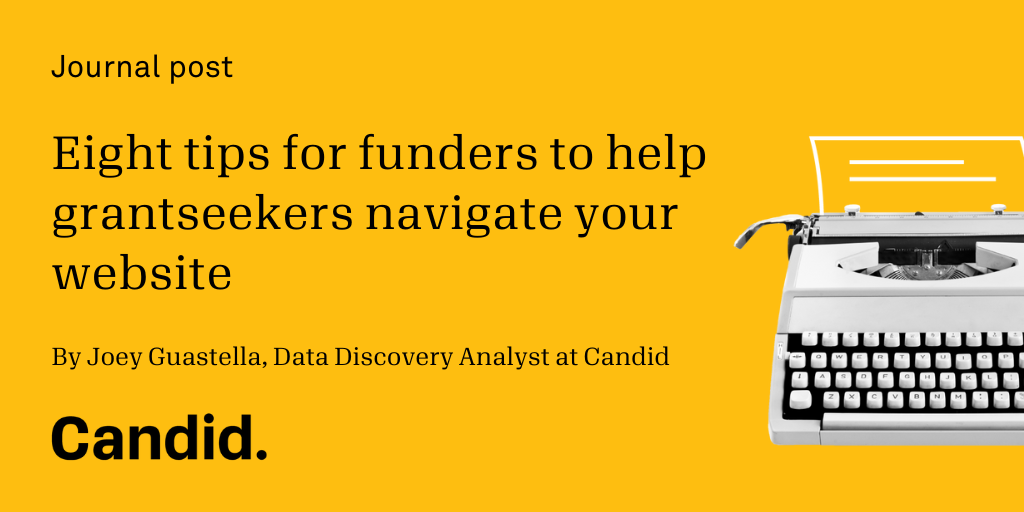Who Has Glass Pockets Now? New Transparency Indicators Added
As of today, the "Who Has Glass Pockets?" transparency and accountability self-assessment form has been expanded to a total of 25 indicators, which includes the addition of three new indicators: diversity data, open licensing, and strategic plans.
When Glasspockets launched in 2010, there were a total of 23 indicators that were developed based on an inventory of current foundation practice and on a framework designed to identify how foundations were using their websites to demonstrate transparency and accountability.
Those 23 elements were never meant to be the same indicators forever, and in fact, our hope was that they would evolve over time to reflect greater transparency at work in the field. Well that time has come, as foundation websites (for those that have them) have continued improving and some foundations are using them as a place to build awareness about their evolving strategies, or to build for scale through open licensing efforts by stating what can be done with the knowledge the foundation funds or produces, or to demonstrate their own commitment to diversity by providing demographic data about the foundation's staff and leadership.
The three new indicators were selected based on a survey of Glasspockets users, from our own inventory of emerging transparency practices in the field, and on which have the greatest potential to address critical transparency gaps. As was the case when we launched, every indicator has examples of foundations that are already using their websites as a way to share this information.
As part of the evolution of the "Who Has Glass Pockets?" assessment framework, we also determined it was time to remove the indicator that focused on how economic conditions affect the foundation's grantmaking since that had greater relevance during the recession, and we can bring that back in the future, when appropriate.
"By opening up strategic plans, grantmakers can strengthen relationships with their grantees."
Open Licensing Policies
Among the new indicators, there seems to be greatest momentum around sharing information about open licensing policies in which foundations specify what can and cannot be done with intellectual property that the foundation produces and/or funds. Generally, an open license is one which grants permission to access, re-use, and redistribute a work with few or no restrictions.
For a field that focuses on investing in new solutions to complex issues, this seems a natural and necessary next step to spreading the knowledge produced from those investments, and ultimately creating a learning culture in philanthropy. In our latest review of foundations which have used the Glasspockets assessment, 13% of them now have such policy statements on their websites, and most have recently added this to their websites, so there is reason to believe that this will continue to grow.
Strategic Plans
Though nearly all of the foundations that have used the Glasspockets assessment use their websites to share information about their grantmaking priorities, only 12% share information about the strategy that led to those priorities. By opening up strategic plans, grantmakers can strengthen relationships with their grantees as well as understanding about how a particular grant fits into the overall foundation's strategy.
Diversity Data
We are continuing to track which foundations have values statements related to diversity and inclusion, which has been an indicator since the beginning of Glasspockets, and have now added a new transparency element indicating which foundations openly share diversity data about their staff and, in some cases, also their board. Currently, relatively few foundations provide diversity head counts, with only 6 out of 77 profiled foundations sharing that data publicly.
A good example of why it's important to share this information can be found in the tech industry, where public pressure pointing to the lack of diversity led many companies to issue such reports. Though the diversity gaps were known before, the act of aggregating and publicly sharing the information has led to increased and formalized efforts to diversify the industry with many leading companies now offering fellowships and other diversity pipelines. Pinterest's Inclusion Labs, Intel's Diversity in Technology Initiative, Google's NextWave program, and Toptal's Global Mentor program are just a few examples of the power transparency has to make inclusion a priority.
You can learn more about the importance of sharing diversity data from this blog series featuring California Endowment's efforts in this area.
Next Steps
The "Who Has Glass Pockets?" self-assessment form has now been updated to reflect the new indicators and framework. So, if you are currently working on your submission, please download the new form. And for those foundations that have already participated, this may be good timing to revisit the transparency indicators and discuss whether your foundation's approach to transparency would benefit from providing these added dimensions.
Our team reviewed the websites for all 77 foundations who have publicly participated in the transparency self-assessment process, and added links to the new indicators on each profile, as appropriate. Of course, in our review, it's possible we may have missed a relevant link, so let us know if you have any links that we should add.
So, how about it - Who has Glass Pockets now? We can't wait to find out.
-- Janet Camarena



